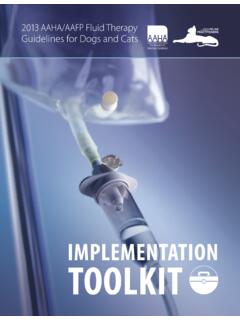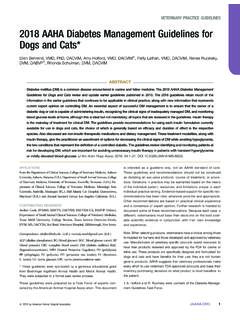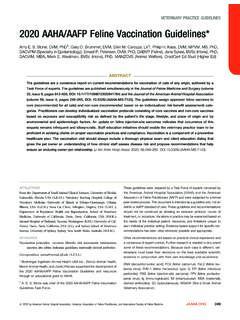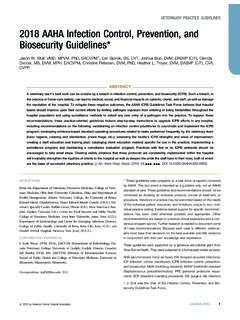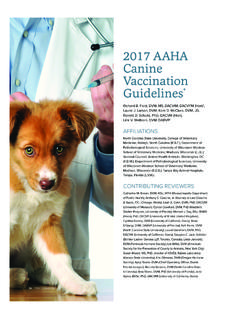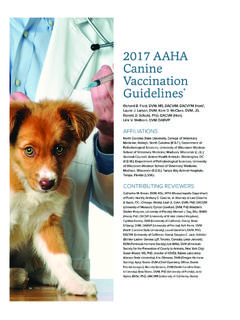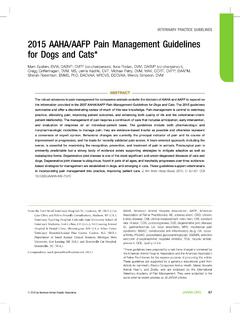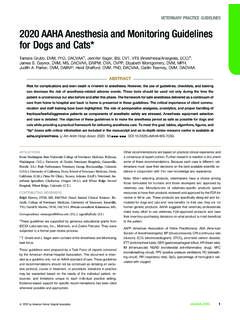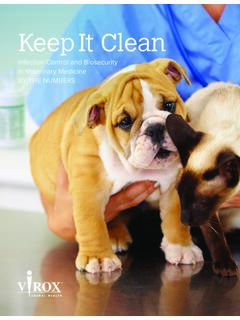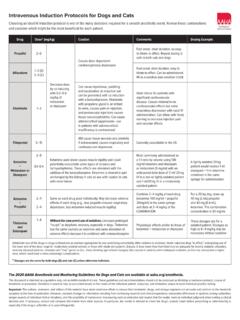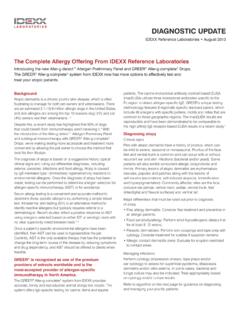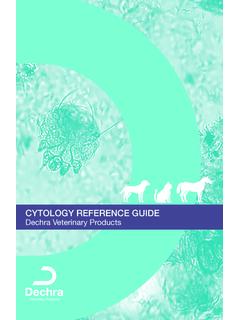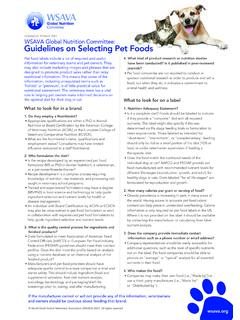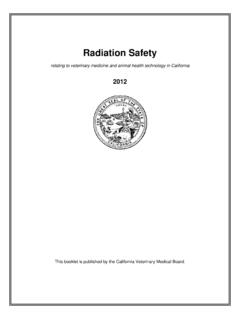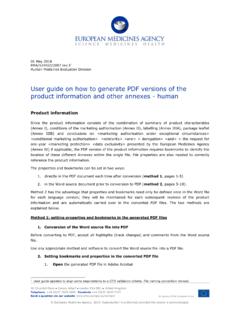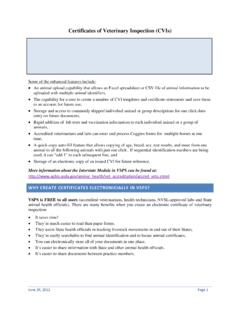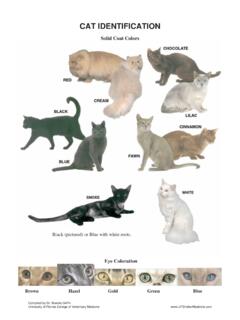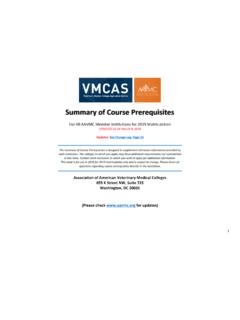Transcription of VETERINARY PRACTICE GUIDELINES 2019 AAHA Dental Care ...
1 VETERINARY PRACTICE GUIDELINES2019 AAHA Dental Care GUIDELINES for Dogsand Cats*Jan Bellows, DVM, DAVDC, DABVP (Canine/Feline), Mary L. Berg, BS, LATG, RVT, VTS (Dentistry), Sonnya Dennis,DVM, DABVP (Canine/Feline), Ralph Harvey, DVM, MS, DACVAA, Heidi B. Lobprise, DVM, DAVDC, Christopher , DVM, DAVDCy, Amy Stone, DVM, PhD, Andrea G. Van de Wetering, DVM, FAVDABSTRACTThe2019 AAHA Dental Care GUIDELINES for Dogs and Catsoutline a comprehensive approach to support companion animalpractices in improving the oral health and often, the quality of life of their canine and feline patients. The GUIDELINES are an update ofthe2013 AAHA Dental Care GUIDELINES for Dogs and Cats.
2 A photographically illustrated, 12-step protocol describes the essentialsteps in an oral health assessment, Dental cleaning, and periodontal therapy. Recommendations are given for general anesthesia,pain management, facilities, and equipment necessary for safe and effective delivery of care. To promote the wellbeing of dogs andcats through decreasing the adverse effects and pain of periodontal disease, these GUIDELINES emphasize the critical role of clienteducation and effective, preventive oral healthcare.(JAmAnimHospAssoc2019; 55:--- ---. DOI )AFFILIATIONSFrom All Pets Dental , Weston, Florida ( ); Beyond the Crown VeterinaryEducation, Lawrence, Kansas ( ); Stratham-Newfields VETERINARY Hos-pital, Newfields, New Hampshire ( ); Department of Small Animal Clin-ical Sciences, College of VETERINARY Medicine, University of Tennessee,Knoxville, Tennessee ( ); Main Street VETERINARY Dental Hospital, FlowerMount, Texas ( ); Department of Surgical Sciences, School of Vet-erinary Medicine, University of Wisconsin-Madison, Madison, Wisconsin( ); Department of Small Animal Clinical Sciences, College of Veter-inary Medicine, University of Florida, Gainesville, Florida ( ).
3 AndAdvanced Pet Dentistry, LLC, Corvallis, Oregon ( ).CONTRIBUTING REVIEWERSR. Michael Peak, DVM, DAVDC (The Pet Dentist, Tampa, Florida); Jeanne , CVT, VTS (Dentistry) (VT Dental Training, Plant City, Florida);Kevin S. Stepaniuk, DVM, FAVD, DAVDC ( VETERINARY Dentistry Educationand Consulting Services, LLC, Ridgefield, Washington).Correspondence: ( )* These GUIDELINES were supported by a generous educational grant fromBoehringer Ingelheim Animal Health USA Inc., Hill s Pet Nutrition, Inc.,and Midmark. They were subjected to a formal peer-review GUIDELINES were prepared by a Task Force of experts convened by theAmerican Animal Hospital Association.
4 This document is intended as aguideline only, not an AAHA standard of care. These GUIDELINES and recom-mendations should not be construed as dictating an exclusive protocol,course of treatment, or procedure. Variations in PRACTICE may be warrantedbased on the needs of the individual patient, resources, and limitationsunique to each individual PRACTICE setting. Evidence-based support for spe-cific recommendations has been cited whenever possible and recommendations are based on practical clinical experience and aconsensus of expert opinion. Further research is needed to document someof these recommendations. Because each case is different, veterinarians mustbase their decisions on the best available scientific evidence in conjunctionwith their own knowledge and : When selecting products, veterinarians have a choice among thoseformulated for humans and those developed and approved by veterinaryuse.
5 Manufacturers of VETERINARY -specific products spend resources to havetheir products reviewed and approved by the FDA for canine or feline products are specifically designed and formulated for dogs and catsand have benefits for their use; they are not human generic products. AAHA suggests that VETERINARY professionals make every effort to use veterinaryFDA-approved products and base their inventory-purchasing decisions onwhat product is most beneficial to the Snyder was the chair of the Dental Care GUIDELINES Task (nonanesthetic dentistry); PD (periodontal disease staging); VOHC( VETERINARY Oral Health Council); VTS (Dentistry) ( VETERINARY TechnicianSpecialist[s] in Dentistry) 2019 by American Animal Hospital concept that a pet is suffering from oral pain, infection, andinflammation that may not be apparent but is affecting their qualityof life is a reality that may not always be fully appreciated bythe VETERINARY profession and often not understood by the pet-owning public.
6 Compromised Dental health can affect a pet sover-all health, longevity, quality of life, and interaction with its ownerwithout exhibiting obvious clinical signs of disease. The purpose ofthis document is to provide guidance to VETERINARY professionals thatwill enable them to recognize Dental pathology and deliver appropriatepreventive and therapeutic care to their patients, as well as to provideessential Dental education to their consideration of our patients welfare, VETERINARY profes-sionals must understand that Dental patients often experience con-siderable fear, anxiety, stress, pain, and suffering. In order to achieveoptimal clinical success and client satisfaction, it is essential that theveterinary team address these concerns with every client, beginningwith thefirst interaction when scheduling an GUIDELINES are based on evidence-based informationwhenever possible, although we recognize that relevant data and well-designed VETERINARY Dental studies have not always been conductedfor all the topics covered in these GUIDELINES .
7 As a result, expertopinion and the extensive clinical experience of the Task Forcemembers have been used in writing the GUIDELINES . The collective goalof the Task Force was to apply the highest level of evidence-basedinformation available when preparing the GUIDELINES are intended primarily for general practitionersand VETERINARY team members without advanced Dental training. TheTask Force encourages all VETERINARY professionals to continuouslyimprove their VETERINARY dentistry knowledge, skills, and treatmentcapabilities and to recognize cases needing referral. It is well knownthat many pet owners use the internet as a default resource for pethealthcare information and home , because ofthe specialized nature of Dental procedures, including diagnosis andtreatment, professional VETERINARY care is necessary for maintainingpet oral health.
8 Therefore, VETERINARY dentistry represents an op-portunity for a primary care PRACTICE to demonstrate a high level ofservice and professional expertise to its clients and to positivelyimpact patient comfort and GUIDELINES are intended to be afirst-line resource in helpingpractitioners achieve that essential goal. Readers should consider theguidelines to be an extension and update of the2013 AAHA DentalCare GUIDELINES for Dogs and Cats(hereafter referred to as the 2013 AAHA Dental Care GUIDELINES ), which continue to be a relevantsource of medically appropriate information on VETERINARY the 2013 AAHA Dental Care GUIDELINES are anexcellent, basic resource for clinicians, the 2019 GUIDELINES publishedhere provide important new information.
9 This includes (1) an ex-panded and updated discussion of commonly performed veterinarydental procedures, supported by photos that illustrate oral pathol-ogy and therapeutic techniques; (2) criteria for periodontal diseasestaging; (3) the importance for addressing pain and stress in dentalpatients; and (4) client communication tips for explaining the im-portance and rationale behind specific Dental and oral education is a particularly important and often underap-preciated aspect of VETERINARY dentistry. Without the pet owner sunderstanding and acceptance of the veterinarian s oral health rec-ommendations, the decision to pursue Dental cleaning, oral evalu-ation, and treatment will seem optional.
10 Applying the AAHA DentalCare GUIDELINES with an emphasis on client communication willenhance your PRACTICE by providing your clients with services thataddress a critical component of canine and feline TerminologyAlthough Dental terminology is constantly being defined, currentdefinitions applicable to VETERINARY dentistry are shown inTable willfind it helpful to review these definitions before readingthe remainder of the dentistry is a discipline within the scope of veterinarypractice that involves the professional consultation, evaluation, di-agnosis, prevention, and treatment (nonsurgical, surgical, or relatedprocedures) of conditions, diseases, and disorders of the oral cavityand maxillofacial area and their adjacent and associated Dental diagnoses are made and treatments performed by alicensed veterinarian, within the scope of his or her education,training, and experience, in accordance with the ethics of the pro-fession and applicable term Dental has lost favor as an all-purpose descriptiveterm because it does not adequately define a particular procedure tobe performed.
